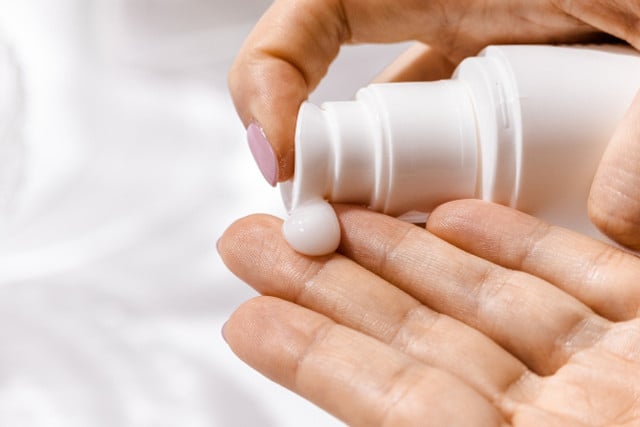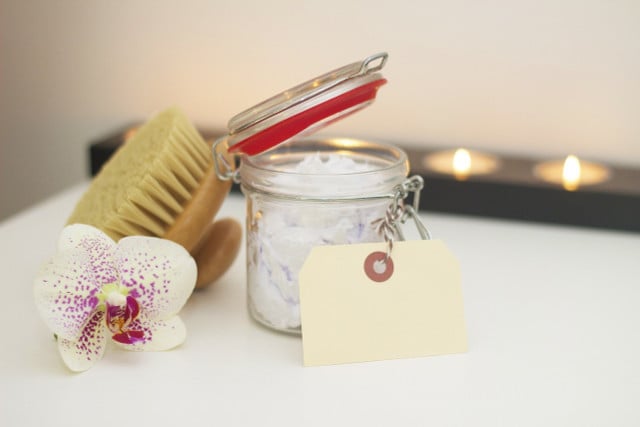
Dry brushing as a skin care ritual is becoming increasingly popular again. We’ll show you how it works and which brushes are best suited.
Dry brushing, also known by the English term “dry brushing”, is currently on everyone’s lips among health and beauty gurus. But the method has been around for a long time: the naturopath Sebastian Kneipp popularized the treatment in the mid-19th century.
Dry brushing is said to stimulate both the circulation and the lymphatic system and make the skin beautiful and soft. But what is dry brushing really all about? We’ll explain the advantages and disadvantages of dry brushing, how to do it correctly and what you should look out for when buying a brush.
Dry brushing: The health benefits

(Photo: CC0 / Pixabay / dovlatovsd)
A note in advance: The health effects of specific dry brushing have not yet been scientifically studied, which is why all effects of the skin care ritual are anecdotal in nature. Nevertheless, dry brushing is very popular as a massage technique because it feels good on your skin and can therefore help to relax it.
In addition, there are various studies that show positive effects of manual lymphatic massages on the detoxification of the lymphatic system and the skin. However, no major studies have yet been carried out specifically with dry brushing.
Alleged health effects of dry brushing
Dry brushing is primarily intended to help stimulate the blood circulation and the lymphatic system. Just like the blood circulation, the lymphatic system is essential for removing harmful substances from the body. It is responsible for excreting toxins and excess fluid. If the lymphatic system is disturbed, we are often tired and exhausted. Diseases develop more easily, lymph fluid can accumulate in the tissue and cellulite can increase.
Dry brushing is said to activate your blood circulation and lymphatic system, thereby supporting:
-
Remove toxins
- Stimulate circulation
- Strengthen energy flow
- strengthen your immune system
- Lymphedema (water retention in fatty tissue) can be resolved with regular treatment
-
Prevent stretch marks
-
Improve cellulite
-
Reduce wrinkles
Dry brushing for beautiful skin
Dry brushing can also have the superficial effect of exfoliating the skin. Dead skin cells are removed, making your skin look fresher and younger.
What you should pay attention to when dry brushing

(Photo: CC0 / Pixabay / AdoreBeautyNZ)
Since the brushes are very hard, sensitive skin can react with irritation to the treatment. If your skin becomes red and sore, wait a few days before the next dry brushing session and proceed more carefully. It is best to moisturize your skin with a moisturizer or body butter that does not contain any other skin-irritating substances such as perfumes.
Also, be careful not to dry brush if your skin is already irritated for other reasons. Avoid it especially…
- if you have sores or rashes on your arms, legs or face.
- directly after shaving or waxing.
- after a chemical peeling on the face (e.g. with retinol).
- if you suffer from very dry and sensitive skin or acne.
- if you suffer from a skin disease such as psoriasis, rosacea or neurodermatitis. In this case, you should generally refrain from dry brushing or have it checked by a doctor beforehand.
Dry brushing: different types of brushes

(Photo: CC0 / Pixabay / Hans)
Different types of massage brushes are suitable for dry brushing. It is best to use models with natural fibers:
-
Massage brushes: Massage brushes for dry brushing usually contain natural bristles made from so-called sisal or tampico fibers. Both are obtained from the leaves of the agave plant and are particularly robust. Sisal massage brushes are particularly suitable: They are coarse, so they do not give way when you press hard. This should allow you to stimulate the lymphatic system better. Caution: You should not press too hard though: The robust material activates your skin almost by itself. You can find sisal and tampico massage brushes at Avocadostore, among other places.
-
Luffa sponges: So-called “luffa sponges” are also popular. The material is obtained from the sponge gourd, whose botanical name is “Luffa cylindrica”. Luffa sponges are not as flexible as the hard sisal bristles, but there is also less risk of you accidentally pressing too hard. They are particularly kind to the skin and long-lasting. You can find luffa sponges on Amazon, for example.
-
Massage gloves: Massage gloves are also made of robust natural fibers. The advantage: You don’t always have to hold them tightly in your hand, but can massage easily with your natural hand movement. Massage gloves for dry brushing are also usually made of sisal fibers (available on Amazon, for example) or hemp or loofah fibers (also on Amazon)
The disadvantage of both brushes made from agave fibers and sponge gourds: They are mostly grown in Asia and the Americas and have to be transported from overseas.
Proper dry brushing: instructions

(Photo: CC0 / Pixabay / TesaPhotography)
When dry brushing, make sure not to press too hard. Here’s how it works:
Dry brushing for the body: instructions
- Always start at the point furthest from your heart. If you want to brush your whole body, start at your feet. Brush gently in circular movements from bottom to top and from right to left.
- First brush your right leg, from the calf, over the back of the knee, over the thigh and buttocks, and forward to the groin (where an important lymph node is located). Repeat the process on the left side.
- Now brush your stomach in circular movements.
- Then brush from your right hand over your forearms and upper arms to your armpit (another important lymph node point). Repeat the process on the left side.
After dry brushing:
- Take a lukewarm shower at most, preferably a cool one. This will also help your circulation to get going. If you want, you can also take a cold shower. A contrast shower helps the lymphatic system with circulation.
- After showering, moisturize your skin with a natural body lotion or body butter that does not contain any skin-irritating additives or perfumes (for example from Avocadostore).
- Allow one or two days between dry brushing sessions to allow the skin to calm down. Between treatments, you can apply massage oil to further stimulate blood circulation (such as a massage oil with caffeine, also available at Avocadostore).
Dry brushing for the face: instructions
Caution: Be as gentle as possible as the skin on your face is particularly sensitive.
- When massaging your face, always start at the neck or shoulders and slowly work your way upwards in circular movements.
- Move the brush slowly up to the face, over the chin, the corners of the mouth, the sides of the nose, and up to the forehead.
- Then carefully move over your temples and your ear towards your neck.
- Now massage the back slowly in a circular motion downwards. This is where important lymph nodes are located that transport toxins away from the face.
After dry brushing:
- Rinse your face with cold water and pat dry gently.
- Moisturize your face with a rich, perfume-free skin cream for sensitive skin.
Read more on Techzle\.com:
- Fascia massage: What you should pay attention to
- Facial massage: Instructions for forehead, mouth and eye area
- Abdominal massage for adults and babies: step-by-step instructions
Edited by Freya Petersen
** marked with ** or orange underlined Links to sources are partly affiliate links: If you buy here, you are actively supporting Techzle\.com, because we then receive a small part of the sales proceeds. .